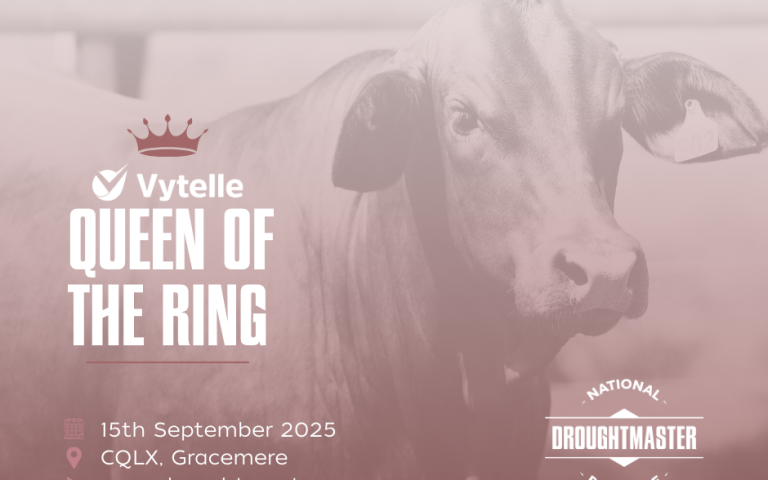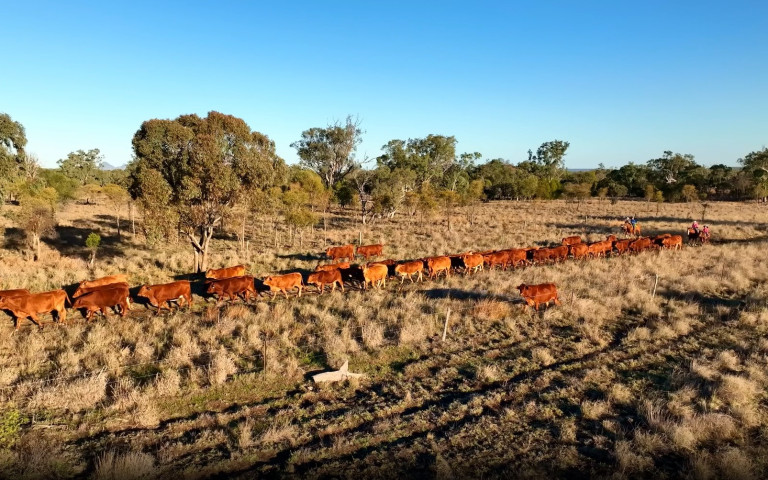Data measurement means evolving Droughtmaster fertility record at Mt Surprise is unlikely to shock
28 Aug 2023Stronger fertility traits may be giving Droughtmaster breeders the edge against their crossbred counterparts in a “survival of the fittest” type exercise currently unfolding on a far north Queensland property.
Hughenden cattleman Jack Stewart-Moore has colourfully characterised the approach he and his wife Kylie are taking as they finetune the composition of their Tropical herd on Burlington, Mt Surprise, inland from Cairns.
The son of Ninian Stewart-Moore, whose father, John, founded Telemon Droughtmaster Stud at Dunluce Station, Hughenden in the 1950s, Jack Stewart-Moore admits to his attachment to the breed synonymous with his family for more than 70 years.
With the purchase of Burlington in 2020 came 1500 breeders of other composition, which has allowed an objective comparison between breeds based on fertility data collected each year by the Stewart-Moores.
Since then, the Burlington herd has grown to 3000 females with the infusion of Telemon Droughtmaster genetics and purchased breeders with tropically adapted content.
So far, the Droughtmaster females at Burlington are re-breeding 10 per cent higher than the other breeders, but it’s still early days, Mr Stewart-Moore says, noting that the on-coming season will provide more definitive results.
“I’d love it to be a purely Droughtmaster operation because they are a breed with such a diverse range of marketing options, especially with the uncertainty in the live export market,” he says.
“Our preference is currently to supply the domestic market with Droughtmasters, but we are keeping an open mind to the composition of our herd based on measured performance.”
With a strong emphasis on adaptability, fertility and production, metrics related to female reproduction will be highest on the list of criteria used to determine which animals remain in the system at Burlington.
Pregnancy testing records are maintained on Stockbook each year and retaining only lactating, pregnant females will essentially allow the ‘survival of the fittest’. So far, the results are significantly higher in the Droughtmaster herd.
The Stewart-Moores are applying the same fertility, temperament and adaptability criteria to their cattle at Burlington as they have at Dunluce for decades, and the Droughtmasters are facing up to the challenge.
While acquiring a property with much higher and reliable rainfall than the home station at Hughenden – nearly double of what Dunluce would receive in an average season – Mr Stewart-Moore says Burlington also comes with its own unique challenges.
While not naïve to ticks, the Droughtmasters that have been introduced to Burlington from the Dunluce herd in the last three years have needed to contend with a higher pest burden, especially flies.
Despite an abundance of grass on Burlington’s black soil and basalt country, high rainfall can deplete protein and nutrients from the available pasture. Overseen by veterinarian Kylie Stewart-Moore, a tailor-made wet and dry season lick program is administered accordingly.
Flooding through the many natural watercourses on the property during the wet season provides challenges when it comes to the controlled mating programme, though a significant infrastructure upgrade since 2020 with paddock division and fencing has significantly helped management ease of the property.
“Essentially this herd will self-select based on its adaptability and fertility, and we are just keeping that process very simple with record keeping and straight-forward selection criteria,” Mr Stewart-Moore says.
“We generally bring the weaners to Dunluce at 150-200kg and take them through to a 400-420kg feedlot steer, and our records show the Droughtie calves are consistently hitting sale specs first.
“It will come down to fertility and the performance of the calves. In this part of the world, it really is survival of the fittest.”
Although early days, the Stewart-Moores are so far very happy with the performance of their Droughtmasters in the more tropical conditions and are seeing great results with infusion of these genetics into the existing herd.
“The Droughtie bulls that we have going over Brahman cows are producing very nice calves, a high percentage of which is grading into our preferred target flatback market,” Mr Stewart-Moore says.
“They are a very good article, and those F1s are now just coming back into the herd as breeders. So far, they look like their growth and adaptability is great, but I won’t start to see their objective fertility data until 2024.”
Burlington’s next crop of calves will drop from September through to February, staying with their mothers until May when the weaners will be removed and sent to Dunluce to grow out on 52,000 hectares of Mitchell grass downs.







